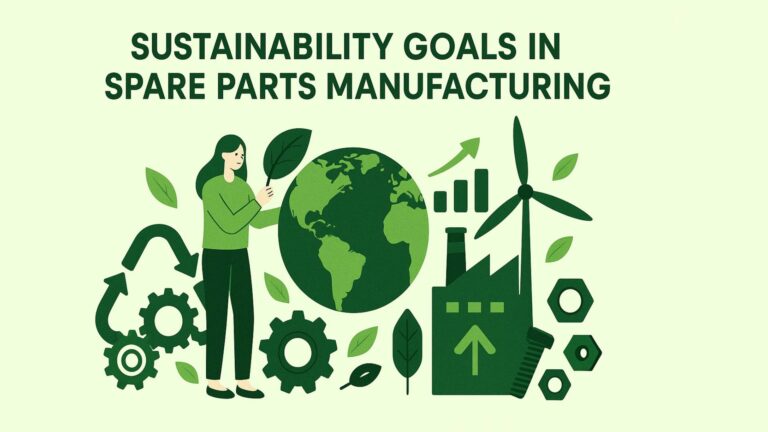In the rapidly evolving world of smartphone refurbishment, few components pose as much difficulty as the iPhone 15 camera repair process. For wholesale technicians and repair shops, the complexity of lens module parts and the delicate nature of Pro Max camera refurb procedures can create major challenges—both technically and economically. As iPhone 15 Pro and Pro Max models push the boundaries of camera innovation, they also push the limits of what’s feasible in aftermarket repair.
In this blog, we’ll break down why the iPhone 15 camera repair process is so intricate, what makes the lens module parts different from previous models, and how to successfully manage Pro Max camera refurb tasks in a commercial repair setting. Know more.
1. Why iPhone 15 Camera Design Is a Game-Changer—And a Repair Nightmare
Apple took a major leap in 2023 with the iPhone 15 lineup, particularly the Pro Max variant, which features a tetra-prism periscope telephoto lens, enhanced low-light sensors, and a powerful image signal processor. While this delivers stunning image quality for users, it creates a nightmare scenario for repair techs.
Here’s what makes iPhone 15 camera repair so difficult:
- The camera modules are larger and denser
- The tetra-prism periscope is fragile and tightly packed
- Heat-sensitive components are integrated near lens alignment zones
- Apple’s new design reduces modular access for quick swaps
- iOS firmware may reject non-genuine parts, disabling camera functions
When conducting Pro Max camera refurb, one misstep in disassembly or calibration can make the entire module non-functional. Even seasoned repair pros are facing learning curves with these new changes.
2. Understanding the iPhone 15 Lens Module Parts
Unlike older iPhones that had more modular camera designs, the lens module parts in the iPhone 15 series have evolved into layered multi-part assemblies, which include:
| Component | Repair Sensitivity |
| Wide-angle sensor | Medium |
| Ultra-wide lens + sensor | Medium |
| Telephoto periscope assembly | High |
| OIS stabilizer motor | Very High |
| Lens cover glass | High |
| Camera FPC connectors | High |
Each of these components can be damaged easily if not handled with precision tools, cleanroom conditions, and careful calibration.
When performing an iPhone 15 camera repair, especially on the Pro Max, these lens module parts must be considered as semi-permanent structures. This is why most successful repairs rely on entire camera module swaps rather than part-level replacements.
3. Software Pairing & Serial Locking Issues
One major challenge in iPhone 15 camera repair is Apple’s firmware-level integration.
The camera modules are software-paired to the device’s logic board using unique serial identifiers. Replacing a module—even with a genuine Apple part—without the correct pairing can result in:
- Disabled or downgraded camera features
- Warnings like “Camera may not be supported”
- Non-functioning features such as Portrait Mode, Cinematic Video, or Night Mode
This affects Pro Max camera refurb operations most severely, as the periscope lens relies on firmware-controlled motor precision. Many shops resort to logic board transplants or microcontroller transfers to maintain full functionality.
4. The Risk of Alignment Failures and Optical Errors
Because the lens module parts in iPhone 15 are tightly packed and mounted using laser-guided robotic calibration, even a small deviation during reassembly can cause:
- Blurry images
- Misfocused subjects
- Shaking videos due to OIS desync
- Distorted telephoto zoom performance
In Pro Max camera refurb, technicians must deal with extremely low tolerance levels—in some cases, under 0.05 mm. Achieving this requires:
- Specialized camera alignment jigs
- Live camera preview calibration tools
- Vibration and static-free environments
In contrast to previous models where “plug and play” replacements were possible, iPhone 15 camera systems are not forgiving.
5. Replacement Part Availability and Authenticity Concerns
Sourcing genuine or OEM-quality lens module parts remains one of the biggest hurdles. As of mid-2025, most refurbished iPhone 15 camera parts in the open market fall into three categories:
- Pulled OEM Modules – High quality but limited supply
- Refurbished Modules – Restored but sometimes degraded quality
- Aftermarket Modules – Widely available but lack calibration and full compatibility
Technicians attempting iPhone 15 camera repair with aftermarket parts often run into autofocus failures, ghosting, or firmware mismatch errors. This is especially true with Pro Max camera refurb, where the tetra-prism telephoto lens lacks any reliable aftermarket equivalent.
6. Disassembly Risks: Fragile Connectors and Heat Zones
Opening the iPhone 15 Pro or Pro Max requires care due to:
- Back-glass opening instead of front (a design Apple implemented for repairability but introduced new fragility)
- Delicate FPC connectors on the camera flex
- Heat-sensitive zones near the A17 chip and battery cell
Too much heat can damage the image signal processor (ISP) chip or de-calibrate the OIS system. That’s why most iPhone 15 camera repair work is advised to be done under infrared heating stations with controlled airflow.
7. Solutions and Tools That Help
To improve success rates in Pro Max camera refurb and standard iPhone 15 camera repairs, professional-grade tools are essential:
- X-ray Inspection Tools: For diagnosing microflex and internal lens shift
- Precision Auto-Align Camera Calibration Stations: To re-calibrate after module replacement
- ESD-safe and Dust-Free Workstations: To prevent particle contamination on sensors
- OEM Lens Module Inventory: Sourced from teardown units or verified suppliers
- iOS Diagnostic Tools (JC, Qianli, etc.): For checking camera serial number mismatch and status logs
8. Repair Shop Strategy: Should You Offer iPhone 15 Camera Repair?
For many wholesale repair shops, especially those dealing in Pro Max camera refurb, the cost and risk involved make it a strategic decision. Here’s how to evaluate:
| Factor | Recommendation |
| High-volume shop with skilled staff | ✅ Offer Pro Max camera repairs |
| Mid-size shop with budget tools | ⚠️ Offer only wide-angle/basic camera fixes |
| Limited access to OEM parts | ❌ Avoid offering iPhone 15 camera services |
9. Tips for Communicating with End-Customers
If you’re wholesaling Pro Max camera refurb devices or units that have undergone iPhone 15 camera repair, transparency is key. Suggested labeling:
“Camera module replaced and calibrated using OEM parts. Telephoto performance may vary slightly from new.”
Or:
“Camera module swapped. Face ID, Night Mode, and optical zoom fully functional. Tested and verified.”
Providing this info builds trust and reduces complaints or return rates.
10. Final Thoughts: Mastering iPhone 15 Camera Challenges
The iPhone 15 camera repair process isn’t impossible—but it is among the most technically demanding jobs in the refurbishment industry today. The combination of fragile lens module parts, software locks, and alignment requirements makes it a high-stakes procedure.
But for those shops that can master it, Pro Max camera refurb services represent a premium market segment with limited competition and higher margins. With the right tools, training, and sourcing strategies, repair professionals can safely unlock the full potential of the iPhone 15 series—even after damage or wear.
Need iPhone 15 Camera Modules in Bulk?
We supply premium-grade lens module parts and refurbished Pro Max camera refurb kits at wholesale prices. Contact us now to equip your shop for successful iPhone 15 camera repair operations—backed by QC-tested performance and global shipping. Know more.





